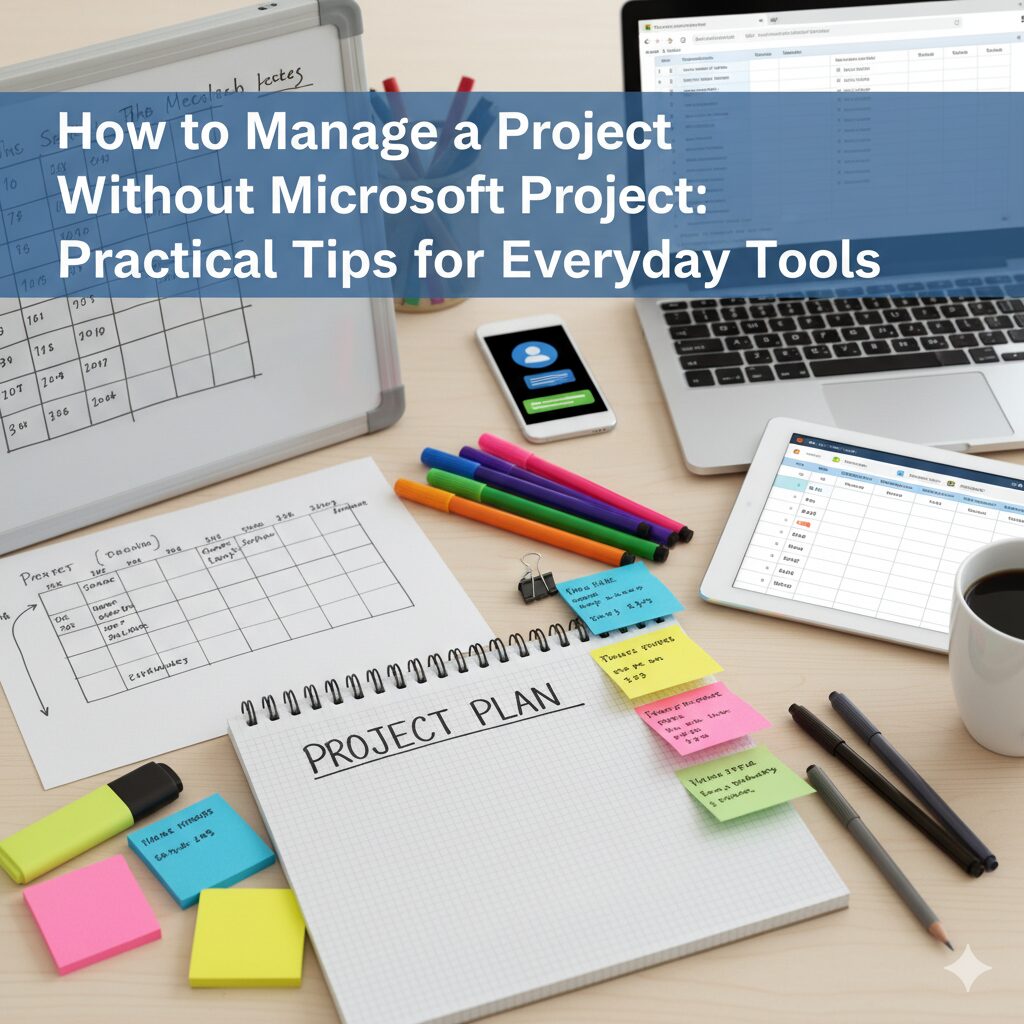You Don’t Need Fancy Tools to Run a Great Project
Let’s be honest — not every organization gives project managers access to Microsoft Project, Jira, or other specialized tools. Sometimes, all you have is email, Excel, Word, and PowerPoint. The good news? That’s more than enough to manage a project successfully — if you use them smartly and with intention.
Project management isn’t about the software. It’s about communication, structure, and accountability — and these are things you can create with everyday tools that everyone already knows how to use.
1. Plan and Track in Excel
Excel can be your best friend when it comes to planning and tracking.
- Create a simple Gantt chart using columns for task name, owner, start date, end date, and status. Use conditional formatting to color-code progress (e.g., green = done, yellow = at risk, red = delayed).
- Add a “Dependencies” column so you can see which tasks rely on others.
- Use filters or pivot tables to quickly summarize who’s doing what and where things stand.
Tip: Save it in a shared location (like OneDrive or SharePoint) and update it live during team meetings.
2. Communicate and Coordinate Through Email
Email remains one of the most powerful tools in a PM’s toolkit — if used properly.
- Use clear subject lines like “Project X – Weekly Update – Oct 11.”
- Summarize the key updates, risks, and next steps at the top of the message before diving into details.
- Use inline comments or color highlights when following up on specific actions.
You can even establish a rhythm — for example, send a “Monday Kickoff” email to remind everyone of priorities and a “Friday Wrap-Up” summarizing progress and blockers.
3. Document in Word
Microsoft Word is perfect for managing project documentation without over complicating things.
- Use Word for your Project Charter, Meeting Notes, and Change Requests.
- Add tables for key project data like roles, assumptions, and milestones.
- Use headers, bookmarks, and comments for easy navigation and collaboration.
Pro tip: Keep a single “Project Master Document” where all major updates are recorded — this helps maintain one source of truth.
4. Present and Engage with PowerPoint
PowerPoint is your storytelling tool. Use it to communicate project status, risks, and successes to executives and stakeholders.
- Use one slide per topic: schedule, risks, deliverables, and key decisions.
- Include visuals like simplified timelines or traffic light indicators.
- End every presentation with a call to action — what you need from your audience.
A clean PowerPoint can often replace a lengthy report when you need to get leadership attention.
5. Stay Organized and Consistent
The key to managing projects without MS Project is consistency.
Use a simple file structure like this:
📁 Project X
├── 01_Charter
├── 02_Plan (Excel tracker)
├── 03_Status Reports (PowerPoint)
├── 04_Communications (Emails, Notes)
└── 05_Archive
Label files with dates (e.g., ProjectX_Status_2025-10-11.pptx) so you can quickly track history.
6. Build Your Own Rhythm
Even without formal PM software, structure is your best tool. Establish a weekly rhythm:
| Day | Action |
|---|---|
| Monday | Kickoff email + Excel tracker review |
| Wednesday | Midweek check-in (short email or chat) |
| Friday | Status summary + PowerPoint update |
This consistency creates alignment, even without automation.
Final Thought
You don’t need Microsoft Project to manage a project — you need clarity, discipline, and communication.
Excel keeps your plan organized. Word captures decisions. PowerPoint tells the story. Email connects the people.
The best project managers know: it’s not the software that delivers results — it’s the structure and leadership behind it.


